Find out how to attract these helpful birds—and why.
Birds will eat insect pests year-round in your garden, if you provide a few of the basic necessities to attract and keep them nearby. Here’s how to attract 10 of the best birds for controlling garden pests.
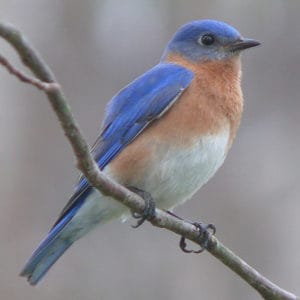 |
Credit: Ken Thomas |
Bluebirds
Bluebirds sing for spring and for their supper of garden pests. The spring diet of the western bluebird (which ranges from southern British Columbia down to central Mexico and from the Pacific to west Texas) is entirely insects, especially grasshoppers! Beetles, weevils, crickets, and caterpillars—sprinkled with the occasional ant, fly, centipede, sowbug, and snail—are the meals of choice for most bluebirds. They prefer to nest in sunny, open areas. Their perfect nest box would be mounted on a post within 50 feet of a tree (facing it, if possible), fence, or other structure away from bushy hedgerows.
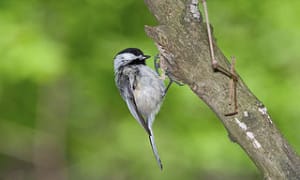 |
Credit: William H. Majoros |
Chickadees
Don’t let their sweet song fool you. Chickadees and their cousins, titmice, are pest-controlchampions throughout the United States and Canada. As much as 90 percent of their diet consists of insects—moths, caterpillars, flies, beetles, bugs, plant lice, scale, leafhoppers, and tree hoppers. In winter, chickadees stay on patrol, searching bark crevices for hibernating insects and the eggs of moths, plant lice, pear psylla, and katydids. To keep chickadees and titmice on patrol in the winter, provide some suet in a mesh bag or a feeder full of sunflower seeds. In spring, provide a nest box packed with wood chips. If possible, place the nest box at the edge of a wooded area.
Nighthawks
They aren’t hawks, but they are insect-eating superheroes that swoop over cities, fields, woodlands, and deserts, sucking up flying ants, flies, leaf chafers, mosquitoes, moths, and grasshoppers. Nighthawks even eat Colorado potato beetles, cucumber beetles, and squash bugs! Although there isn’t much you can do to attract nighthawks (they don’t build nests), you can be on the lookout for their eggs and be careful not to harm them. Look for one to three whitish olive eggs with dark blotches on sandy soil (sometimes at the base of a shrub), on gravel (especially on rooftops), on a stump, or in an old robin’s nest. Their breeding range extends from the southern Yukon to southern California down to Honduras and Nicaragua.
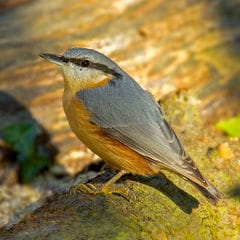 |
Credit: Andreas Trepte |
Nuthatches
Hopping headfirst down a tree isn’t just nutty behavior—nuthatches are searching crevices for ants, scale, beetles, moth eggs, caterpillars, and cocoons. Nuthatches feed on seeds and nuts (hence their name) during the cold months, but in summer they’re 100 percent insectivorous. They raise their young exclusively on insects. Three different species of nuthatches are found in various regions of North America. Also woodland natives, nuthatches are more likely to settle into nesting boxes that are located in clearings in or along the edges of wooded areas. Fill the boxes with wood chips; cover the boxes with strips of bark to make them even more attractive to the birds.
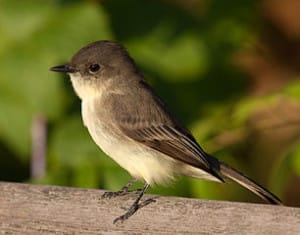 |
Credit: John Benson |
Phoebes
These stealthy hunters wait on low tree branches, slowly lowering and raising their tails, then swoop out to snap up insects with loud clicks of their beaks. Phoebes (whose name comes from their characteristic FEE-BE song) feast on everything from flies, mosquitoes, small moths, flying ants, and small beetles to grasshoppers, crickets, and caterpillars.
Because these fearless flyers especially like to swoop down over water to scoop up insects, try using water (a small pool, pond, or water garden) to entice them to your yard. Since phoebes prefer to build their mud-made nests in, on, or around manmade structures, you can attract them by providing a nesting shelf or two under your eaves (located in a quiet spot, away from busy doorways, porches, or decks).
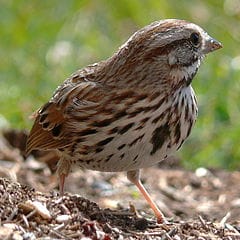 |
Credit: Ken Thomas |
Native Sparrows
These include the song sparrow, chipping sparrow, and field sparrow (but not the so-called house sparrow, which is actually a weaver finch). Although most of the sparrows’ diet is seed, it consists of more than one-third insects, especially during the nesting season. Sparrow seed eating is even garden friendly. They prefer weed seeds, such as from crabgrass, ragweed, and pigweed.
Their insect choices include grasshoppers, caterpillars, beetles, leafhoppers, true bugs, ants, and beetles. One warning, though: In warmer parts of the country, sparrows sometimes supplement their diet with winter garden crops—clipping off seedlings and sprouts. In these areas, just protect young seedlings with row covers or mesh screening.
To make it easy for the birds to nest along the perimeter of your yard, provide nesting materials like straw, bark, and pieces of string. Sparrows raise two or three broods per year.
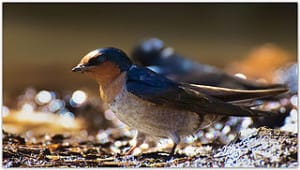 |
Credit: Dharani Prakash |
Swallows
In spring, insects make up 99 percent of a swallow’s diet. These graceful birds (which include the famed, insect-eating purple martin) are excellent flyers and much of their food—flies, beetles, winged ants, moths, grasshoppers, and dragonflies—is caught while they’re on the wing. A few species occasionally feed on the ground, chomping on ants, beetles, and other insects.
Swallows often nest in dead trees, in holes in the face of a cliff, or in banks along streams and roads. They also have a real affinity for man-made structures. Barn and cliff swallows build their characteristic muddy nests under eaves, in barns, and under bridges and culverts. To encourage this, build a nesting shelf under an eave and make a patch of mud near your garden. Tree swallows and violet-green swallows (a Northwest native) will also come to bluebird boxes (in fact, they’re probably easier to attract there than bluebirds). You can buy houses specifically for purple martins, but make sure there’s a pond or other body of water nearby, because purple martins prefer to feed on insects that live near water.
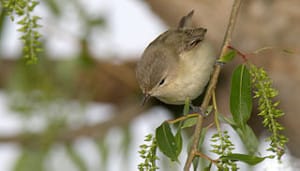 |
Credit: William H. Majoros |
Vireos
Vireos prefer wooded areas, with most living their summers in the North and their winters in the warm South. In spring, 99 percent of their diet is caterpillars (their favorite), snails, moths, bugs, beetles, ants, and flies.
Vireos are most likely to venture into yards where clumps of dense shrubs and tangles of blackberries surround the perimeter, especially if it borders on a wooded area.
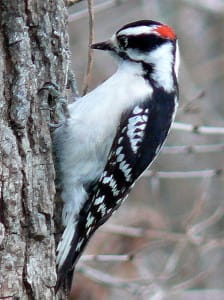 |
Credit: Ken Thomas |
Woodpeckers
These well-known woodsy dwellers are more easily coaxed into your backyard than vireos. Of the 21 species found in North America, the downy, hairy, and red-bellied woodpeckers are most likely to drop by for a meal. The downy and hairy woodpeckers get up to 85 percent of their food by chowing down on wood-boring beetle and moth larvae, ants, caterpillars, adult beetles, millipedes, and aphids.
Woodpeckers might use a nest box packed with wood chips in a clearing along the edge of the woods. But they’re even more likely to nest in old dead trees (or “snags”)—so if you have one on your property, trim off most of the branches, and leave the trunk for woodpecker nests. These snags also attract and house other native creatures.
Woodpeckers will eagerly venture into your yard for suet or sunflower seeds in the off-season and eat your pests spring through fall.
 |
Credit: William H. Majoros |
Wrens
Brown- or gray-plumed, lively and vocal, 10 species of wrens call North America their home, living everywhere from brushy woodlands, shrubbery, and marshes to rocky canyons and even deserts.
The Carolina wren is almost exclusively an insect eater in the summer. The widespread house and Bewick’s wrens also have insect-rich diets. Most wrens search trees, shrubs, and vines for caterpillars, ants, millipedes, grasshoppers, flies, snails, and beetles.
Wrens generally raise more than one brood during the season, with six to eight eggs per brood. It takes a lot of bugs to fill all those beaks, so it’s fairly easy to get these prolific birds to nest in your yard. They’ll take up residence in nest boxes; in empty gourds, cans, and jars; and even in clothespin bags left on the wash line!

